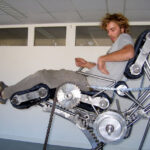Heb je het druk? Zoek je een snelle, effectieve manier om te ontspannen (zonder uit…
Do you feel you are too busy? Do you want a quick effective way to…
Op mijn massagetafel liggen regelmatig zwangere cliënten. De één aan het begin van de zwangerschap,…
Amongst the clients who lie on my massage table, many are pregnant, some more advanced…



